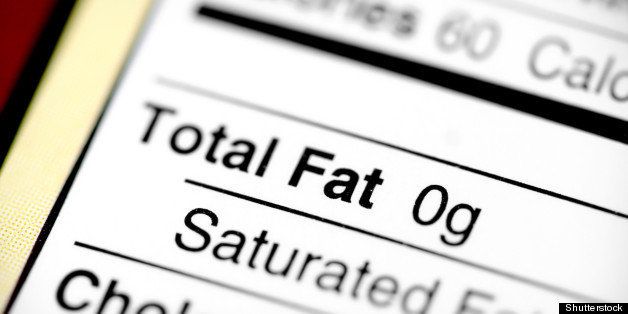
New research soon to be published in the International Journal of Obesity by researchers at University of Ulster in Northern Ireland found that subjects eat more when food is labeled with a term perceived as healthy such as "reduced fat."
Nearly 200 adult subjects were presented with pairs of foods, one food labeled with a "healthy"-sounding term such as "reduced fat" and the other food a regular brand item. The pairs of items had the same number of calories per 100-gram portions. Foods studied were reduced-fat and luxury coleslaw, semi-skimmed milk and Sprite, and Frosties and Special K cereals.
The subjects served themselves a larger portion of the healthy-sounding foods. This translates into the fact that they actually ate more calories from the products perceived as healthy. The subjects also underestimated how many calories were in these portions.
I have seen this phenomenon quite a bit in my private practice. Clients often think that if a food is labeled with a healthy-sounding term, they can eat more. For example, just because cookies are labeled reduced-fat, organic or gluten-free, people often think that somehow the calories do not count. But after all, cookies are cookies, regardless of whether they are reduced-fat, organic, gluten-free, or labeled some other way. And usually, when products are labeled as "reduced-fat," manufacturers compensate by adding sugar. When products often marketed for diabetics are labeled as sugar-free, they may contain added fats or sodium.
At the end of the day, it is important to remember that very often marketing is at play here. As reported in Reuters:
"Foods are marketed as being healthier for a reason, because food producers believe, and they correctly believe, that those labels will influence us to eat their products and perhaps eat more of their products," said Dr. Cliodhna Foley Nolan the director of Human Health and Nutrition at Safefood, a government agency in Ireland.
The takeaway message: Don't be fooled by food label traps. Here are several ways to avoid such pitfalls.
1.Read food labels. Look at the calories per serving along with the other nutrients, such as fat, sodium, and sugar. The order of ingredients matters, too. Ingredients are listed in descending order by weight. If the first few ingredient contain unhealthy ingredients, regardless of the promise made on label, I'd suggest limiting this product or skipping it entirely.
2.Pay attention to your serving size. Be mindful as to how much you actually eat. For example, if you must indulge in a cookie, go for one cookie instead of two cookies, regardless of how they are labeled. Reduced-fat, sugar-free, or gluten-free cookies still have calories. Reduced-fat or reduced-sugar coleslaw, for example, may still have the same number of calories as the regular version. And the more you eat, the more calories you will be taking in. It is that simple.
3.Eat more whole food. This includes unprocessed foods such as fresh fruits and vegetables -- which do not have food labels touting these products as healthy, low-fat, reduced-fat, gluten-free, or some other "healthy"-sounding term.
4.Cook more. By preparing your own food, you are able to know exactly what ingredients, and how much of each, is going into the final product.
5.Avoid "diet" food. Oftentimes, diet foods such as baked goods labeled low-fat, reduced-calorie, or fat-free do not taste great. And you may end up eating more to compensate for the mediocre taste. My advice: Stick to the real thing, and eat a smaller portion of a food you really enjoy.
Finally, always remember that there is no free lunch.
For more by Dr. Lisa Young, click here.
For more on diet and nutrition, click here.